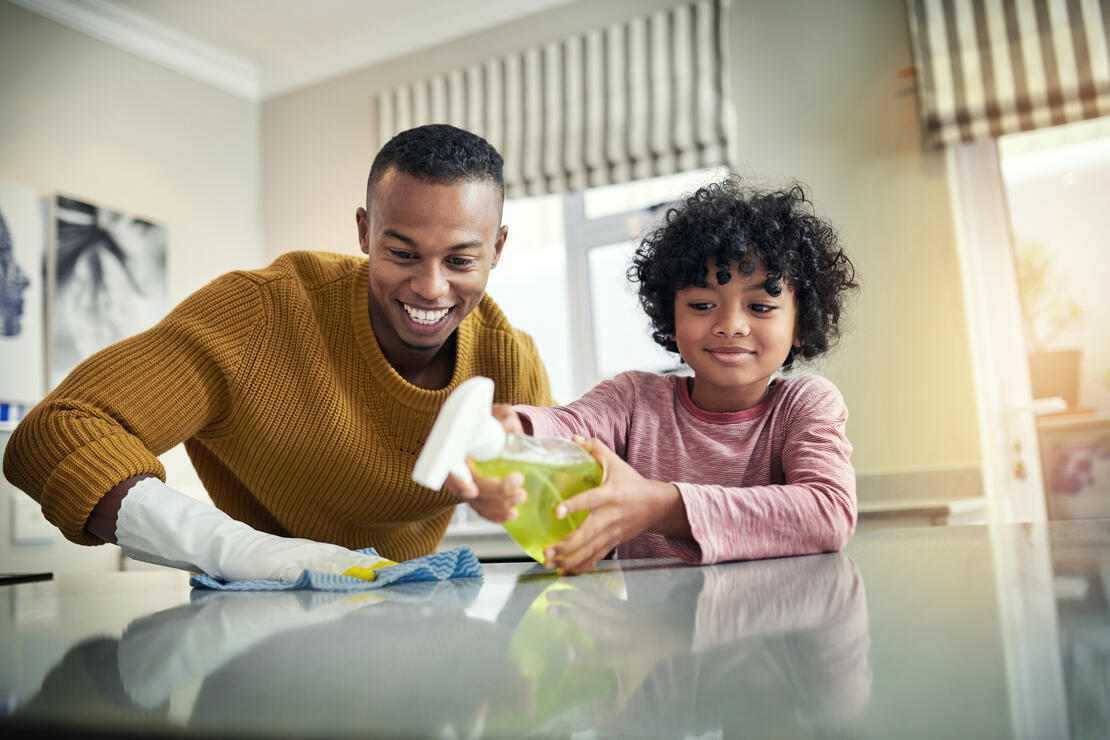Stop the Spread: 5 Key Things to Clean After Getting Sick

Being sick takes a lot out of you. Even as you start to recover, finding the energy to clean can feel impossible. But tackling germs early—while you’re still sick and after—can help you bounce back faster and keep illness from spreading to others.
So, where should you start? Oludolapo Ilori, MD, family medicine specialist at LifeBridge Health, helps us break it down into manageable steps, starting with understanding the difference between cleaning, sanitizing and disinfecting—and tackling the five places where germs love to hide.
Cleaning, Sanitizing and Disinfecting: What’s the Difference?
Before you reach for the nearest cleaning product, it’s important to note that not all cleaning methods work the same way.
- Cleaning removes dirt and impurities using soap, water and a cloth. While this helps tidy surfaces, it doesn’t kill germs.
- Sanitizing reduces the number of germs to safer levels using products like sanitizing sprays or bleach solutions.
- Disinfecting kills the highest percentage of germs and requires stronger products, such as hydrogen peroxide or bleach-based disinfectants.
To effectively stop the spread of illness, Dr. Ilori emphasizes the importance of cleaning first, then disinfecting. “Both are important,” she says. “Whichever products you decide to use, make sure you follow the instructions on the product label.”
5 Key Things to Clean After Getting Sick
Once you’re ready to tackle your space, focus on these five key areas:
- High-Touch Surfaces
Doorknobs, light switches, remotes and keyboards are hotspots for germs. Dr. Ilori notes that touching these areas while sick can spread germs to others. When avoiding contact isn’t possible, clean them with a surface-appropriate product first, then disinfect to stop the spread. - Bathroom and Kitchen Areas
These spaces often see the most household traffic, making them prime areas for bacteria to grow. Regular cleaning, even during recovery, is crucial. Focus on faucets, sinks, countertops and appliance handles. - Bedding, Linens and Towels
Sleeping while sick leaves behind more than germs—saliva, bodily fluids, dead skin cells and more accumulate in your bedding and towels. Wash them thoroughly! Dr. Ilori notes that it’s safe to wash these items with other laundry as long as you use hot water and detergent. - Personal Items
Phones, toothbrushes and reusable water bottles are often overlooked. While Dr. Ilori doesn’t recommend discarding items like toothbrushes, she does stress the importance of rinsing them with hot water and keeping them for personal use only. - Trashcans and Laundry Hampers
Tissues, unwashed clothing and other sick-day remnants end up in these spots. A quick disinfectant wipe-down of these surfaces can make a big difference in preventing lingering germs.
Good Habits for a Healthier Space
Healthy spaces are created with day-to-day decisions.
- Wash hands frequently. “The best way to keep germs from spreading is washing your own hands,” Dr. Ilori advises.
- Stay up to date on vaccinations and wellness checkups. Prevention is just as important as treatment when it comes to staying healthy.
- Start cleaning while you’re sick. Continue cleaning after. Germs spread easily. Staying on top of them makes recovery smoother.
- Wipe down high-touch areas regularly, especially after having visitors.
- Use removable dust covers or screen protectors for electronics to make cleaning easier.
A Healthier Home Starts Here
Cleaning after illness isn’t just about tidying up—it’s about caring for your health and the people around you. If you’re not sure where to start, focus on the essentials: high-touch surfaces, shared spaces and personal items.
When it comes to recovery, every little step counts. And if you need help getting back to full health, LifeBridge Health is here to help.
- Need quick care? Visit one of our ExpressCare Urgent Care Centers for a walk-in appointment.
- Prefer to stay home? Try a text-based eVisit.
- Be proactive. Get started with a new primary care provider.
A little effort—both in cleaning and seeking care—goes a long way in keeping you and your loved ones healthy.